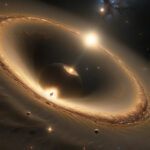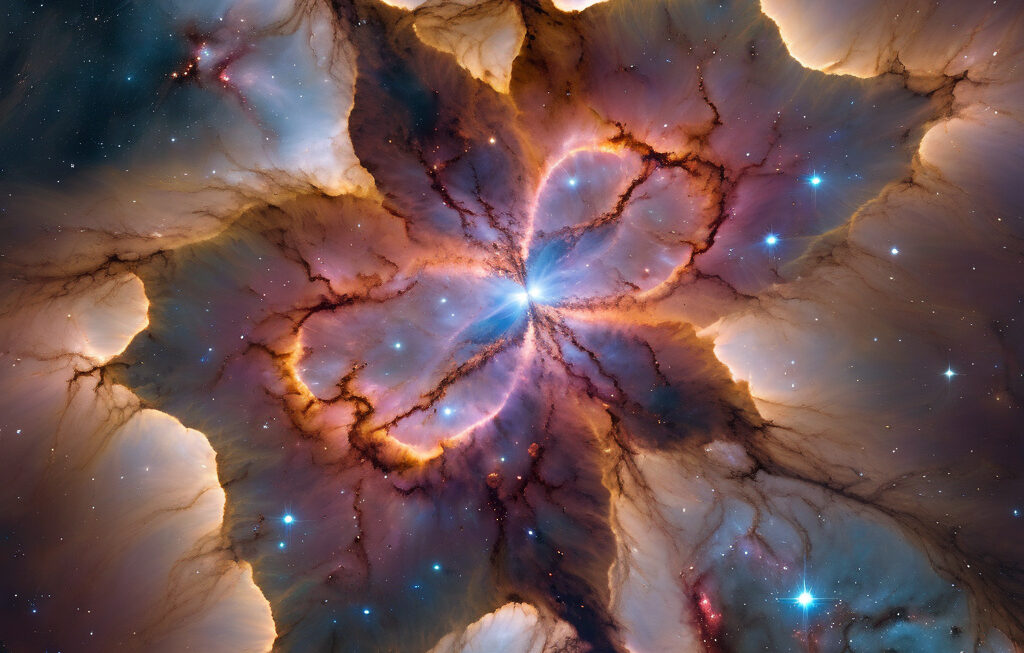Astronomers Decipher the Eccentric Dance of Dust Around the Fomalhaut Star’s Ring
For nearly 20 years, astronomers have been perplexed by the strange disk of dust surrounding the Fomalhaut star, located approximately 25 light-years away from Earth in the Piscis Austrinus constellation. This enigmatic ring, first discovered in the early 2000s, has been a subject of fascination and study due to its unusual characteristics and behavior. Recent advancements in observational technology and data analysis have finally allowed scientists to unravel the mysteries of this eccentric dance of dust, shedding light on the dynamics of planetary systems and the formation of celestial bodies.
The Fomalhaut star, also known as Alpha Piscis Austrini, is twice as massive as the Sun and significantly younger, with an estimated age of only a few hundred million years. Its surrounding debris ring, resembling a scaled-up version of Saturn’s rings, spans a vast region and is thought to be populated by countless rocky and icy fragments left over from the star’s formation. What makes this ring particularly intriguing is the apparent offset between its center and the position of the star, hinting at complex interactions and gravitational influences at play.
Using data from the Atacama Large Millimeter/submillimeter Array (ALMA) in Chile and the Hubble Space Telescope, astronomers have been able to create a detailed map of the dust distribution within the Fomalhaut ring. By analyzing the density, temperature, and orbital dynamics of the dust particles, researchers have uncovered a fascinating pattern of clumps and asymmetries that defy traditional models of planetary systems. These findings suggest that the ring is not a static structure but rather a dynamic environment shaped by the gravitational perturbations of unseen companions.
One of the key discoveries made by the research team is the presence of a massive exoplanet orbiting Fomalhaut at a distance roughly equivalent to the asteroid belt in our solar system. This gas giant, dubbed Fomalhaut b, exerts a significant gravitational pull on the surrounding dust, causing it to clump together and form distinct features within the ring. Furthermore, the eccentric orbit of Fomalhaut b indicates that it may have interacted with other planets or celestial bodies in the past, leading to the disruption and reshaping of the debris field.
The implications of these findings extend far beyond the Fomalhaut system, offering valuable insights into the formation and evolution of planetary systems throughout the universe. By studying the intricate dance of dust around distant stars like Fomalhaut, astronomers can piece together the complex histories of these cosmic objects and gain a deeper understanding of the processes that give rise to planets, moons, and other celestial bodies. In a sense, each debris ring is a time capsule that preserves the tumultuous events that shaped its parent star system, waiting to be deciphered by the keen eyes of scientists.
As technology continues to advance and observational techniques improve, astronomers are poised to unlock even more secrets hidden within the depths of space. The enigmatic Fomalhaut ring serves as a testament to the power of perseverance, curiosity, and innovation in the quest to unravel the mysteries of the cosmos. With each new discovery, we come one step closer to unraveling the intricate tapestry of the universe and understanding our place within it.
Fomalhaut, Astronomy, Planetary Systems, Dust Dynamics, Celestial Bodies












